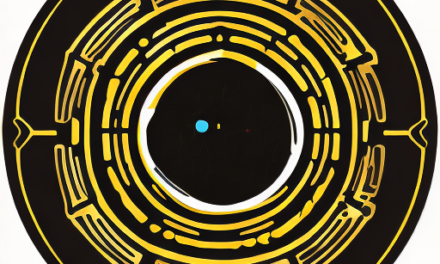Related Posts
- Revolutionizing Gaming: How Web3’s Play-to-Earn Model Promotes Equal Access and Inclusivity
 Discover how Web3's play-to-earn model is promoting equal access and inclusivity in the gaming ecosystem, and learn about the innovative solutions driving this revolution.
Discover how Web3's play-to-earn model is promoting equal access and inclusivity in the gaming ecosystem, and learn about the innovative solutions driving this revolution. - Start Accepting Web3 Payments: Web3Payments.com
 Ready to start accepting Web3 payments today. Sign up at Web3Payments.com
Ready to start accepting Web3 payments today. Sign up at Web3Payments.com - The Evolution of Web3: A Comprehensive Overview
 Explore the transformative journey of Web3 in this comprehensive overview, as it emerges as a revolutionary paradigm reshaping our internet experience. From its roots as a concept for a decentralized internet to its integration with blockchain technology, Web3 embodies principles of decentralization and trustlessness. Smart contracts facilitate trustless interactions, and the tokenization of assets, particularly through NFTs, introduces novel possibilities for ownership and liquidity. The interoperability of blockchain networks forms a collaborative Web3 ecosystem with diverse decentralized applications spanning finance, supply chain, and healthcare. As Web3 disrupts traditional models, its impact reverberates across industries, revolutionizing finance through DeFi, enhancing transparency in supply chains, and ensuring privacy in healthcare. While facing challenges like scalability and regulatory concerns, the future of Web3 looks promising, with ongoing developments aiming to overcome obstacles and unlock its limitless potential.
Explore the transformative journey of Web3 in this comprehensive overview, as it emerges as a revolutionary paradigm reshaping our internet experience. From its roots as a concept for a decentralized internet to its integration with blockchain technology, Web3 embodies principles of decentralization and trustlessness. Smart contracts facilitate trustless interactions, and the tokenization of assets, particularly through NFTs, introduces novel possibilities for ownership and liquidity. The interoperability of blockchain networks forms a collaborative Web3 ecosystem with diverse decentralized applications spanning finance, supply chain, and healthcare. As Web3 disrupts traditional models, its impact reverberates across industries, revolutionizing finance through DeFi, enhancing transparency in supply chains, and ensuring privacy in healthcare. While facing challenges like scalability and regulatory concerns, the future of Web3 looks promising, with ongoing developments aiming to overcome obstacles and unlock its limitless potential. - How to Set Up Your First Crypto Wallet
 A beginner's guide to choosing and setting up your first cryptocurrency wallet. Learn how to create wallets on MetaMask, Trust Wallet, Exodus and more.
A beginner's guide to choosing and setting up your first cryptocurrency wallet. Learn how to create wallets on MetaMask, Trust Wallet, Exodus and more. - PayPal’s Crypto Revolution: Bridging Finance and Web3

- A Comprehensive Guide to Web3 Payment Platforms
- Exploring the Benefits of Web 3 Payments
 This article provides an overview of Web 3.0, the latest iteration of the internet powered by blockchain technology, and how it is impacting the payments industry.
This article provides an overview of Web 3.0, the latest iteration of the internet powered by blockchain technology, and how it is impacting the payments industry. - Tips for Implementing Web3 Payments into Your Business Model
- How to Leverage Web3 Payments to Increase Your Revenue
- Choosing the Right Web 3.0 Payment Gateway for Your BusinessThe world of online payments is rapidly evolving, and businesses need to stay ahead of the curve to ensure they are providing their customers with the best payment experience. Web 3.0 payment gateways are the latest development in the world of online payments, offering businesses a secure and efficient way to process payments. In this… Read more: Choosing the Right Web 3.0 Payment Gateway for Your Business
- The Advantages of Using Web3 Payments for E-Commerce
- Web3 Program Security ConsiderationsFor businesses using Web3 programs, security is of paramount importance, and companies must ensure that the systems they rely on are secure from malicious actors. While Web3 programs offer a wide range of benefits in comparison to the more traditional Web2 programs, they can also introduce new security challenges that must be addressed. Here are just a few considerations that businesses should keep in mind when using Web3 programs.






